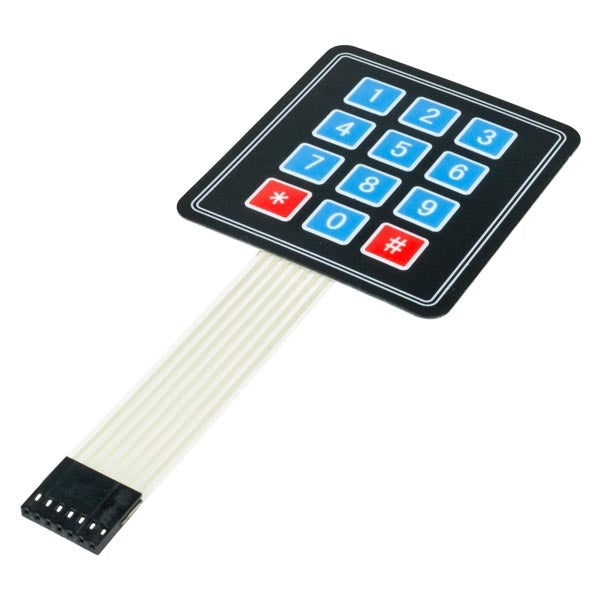Choosing the Right Membrane Switch for Your Business Needs
Choosing the Right Membrane Switch for Your Business Needs
Blog Article
Understanding Membrane Layer Switches: The Trick to Sturdy and Trustworthy Controls

What Are Membrane Switches?
Membrane layer switches are an advanced service in the realm of user interface technology, combining performance and design perfectly. These devices act as a user interface in between customers and electronic systems, integrating several elements right into a small layout. Generally built from adaptable, slim layers of materials, membrane layer buttons are made to reply to touch, making it possible for individuals to connect with machinery and electronic gadgets properly.
The key components of a membrane layer switch include a printed circuit layer, graphic overlay, and a spacer layer that stops unexpected activation. The visuals overlay can be tailored to reflect brand identity or customer choices, enhancing aesthetic appeals while making sure functionality. Membrane layer buttons are generally utilized in numerous applications, including clinical devices, customer electronics, and commercial devices, owing to their durability and resistance to ecological elements such as wetness and dirt.
Among the crucial benefits of membrane switches is their capability to hold up against wear and tear, making them suitable for high-traffic environments. In addition, they are light-weight and need minimal room, permitting ingenious layouts in item growth. Generally, membrane layer changes represent a efficient and useful choice for modern digital user interfaces, weding technology with user-centric style principles.
Exactly How Membrane Switches Over Work
The procedure of membrane switches joints on a straightforward yet efficient mechanism that converts customer input into electronic signals. These switches consist of multiple layers, typically consisting of a visuals overlay, a spacer layer, and a circuit layer. When a customer presses the switch, the leading layer warps, permitting a conductive component in the circuit layer to make call with an equivalent conductive pad on the bottom of the graphic overlay. This get in touch with closes the circuit and sends a digital signal to the tool, suggesting that the button has actually been triggered.
The style of membrane layer buttons can differ, but they typically integrate domes or tactile components to supply comments to the individual, improving the overall experience - membrane switch. The materials used in membrane buttons, such as polyester or polycarbonate, add to their sturdiness and resistance to ecological elements, consisting of wetness and dust. Additionally, the published circuits are normally encapsulated, which safeguards them from damage over time.
Benefits of Membrane Switches

Additionally, membrane layer buttons are recognized for their resilience. Constructed from robust materials, they are immune to dirt, wetness, and physical wear, which significantly extends their lifespan contrasted to standard mechanical buttons. This resilience makes them specifically suitable for high-traffic atmospheres and applications calling for long life.
An additional considerable benefit is the ease of cleansing and upkeep. The smooth surface of membrane changes decreases dirt build-up and is frequently invulnerable to spills, making them perfect for setups that call for frequent sanitization.
Moreover, membrane check my site buttons offer a structured profile, causing a thinner layout that can be incorporated into numerous devices without including mass. This feature not just boosts the aesthetic allure but additionally adds to an extra ergonomic item layout.
Applications of Membrane Buttons
User-friendly and functional, membrane switches locate applications across a large range of sectors, including clinical devices, consumer electronic devices, and industrial devices. In the medical field, these buttons are important to tools such as analysis devices, person tracking systems, and infusion pumps, where integrity and ease of cleansing are vital. Their capability to keep and endure severe environments capability makes them perfect for such applications.

In customer electronics, membrane layer switches are used in products like microwaves, washing equipments, and push-button controls - membrane switch. Their sleek style enables instinctive interface, improving the overall user experience while providing longevity and resistance to put on and tear
Industrial tools additionally takes advantage of membrane buttons, specifically in control panels for machinery and automation systems. These buttons supply protection against dust and wetness, ensuring regular efficiency in difficult see page atmospheres. Their adjustable attributes enable producers to customize them to specific operational requirements, enhancing efficiency and functionality.
Selecting the Right Membrane Switch Over
When selecting a membrane button, it is necessary to take into consideration numerous elements that affect efficiency and viability for particular applications. The key considerations consist of environmental problems, tactile feedback, toughness, and style specs.
First, examine the operating atmosphere; switches exposed to moisture, chemicals, or extreme temperature levels need certain products to guarantee long life and performance. Next off, review the requirement for tactile feedback. Relying on user interaction, some applications may gain from a tactile action to confirm activation, while others might favor a non-tactile design for visual reasons.
Longevity is one more essential variable; membrane switches should be developed to withstand frequent usage, impacts, and abrasion. Guarantee the selected switch can sustain the expected lifecycle, especially in high-usage circumstances.

Verdict
In verdict, membrane layer switches over serve as essential elements in the design of reliable and sturdy control systems across numerous industries. The convenience of membrane switches permits for customized remedies that satisfy particular operational demands, strengthening their importance in modern innovation.
Membrane switches over represent a critical aspect of modern-day interface style, mixing functionality with durability in various applications.Membrane switches are a sophisticated remedy in the world of user interface modern technology, combining capability and design seamlessly. Generally created from adaptable, slim layers of products, membrane useful content buttons are made to react to touch, making it possible for individuals to communicate with machinery and digital tools effectively.
The design of membrane layer switches can differ, however they typically incorporate domes or responsive components to provide feedback to the individual, improving the overall experience.In final thought, membrane changes offer as essential elements in the design of dependable and durable control systems across various markets.
Report this page